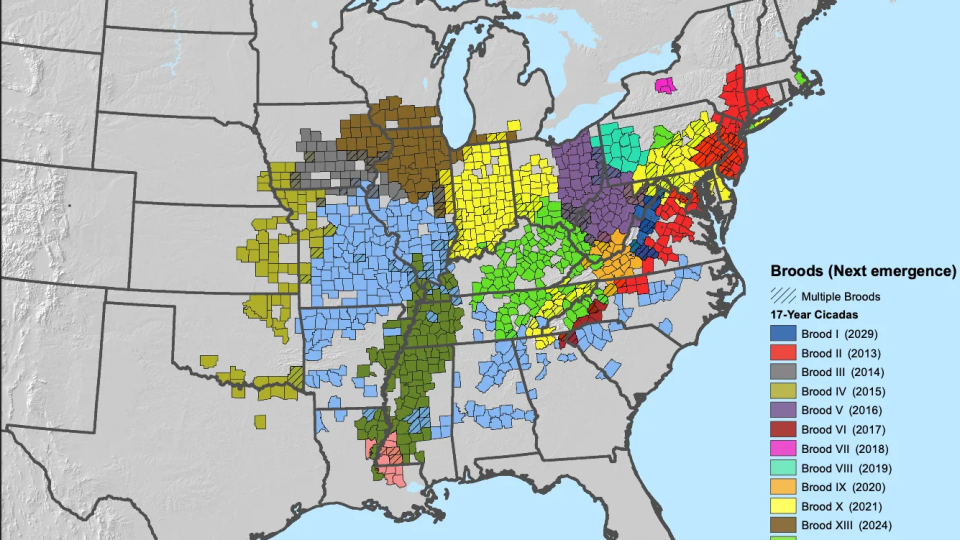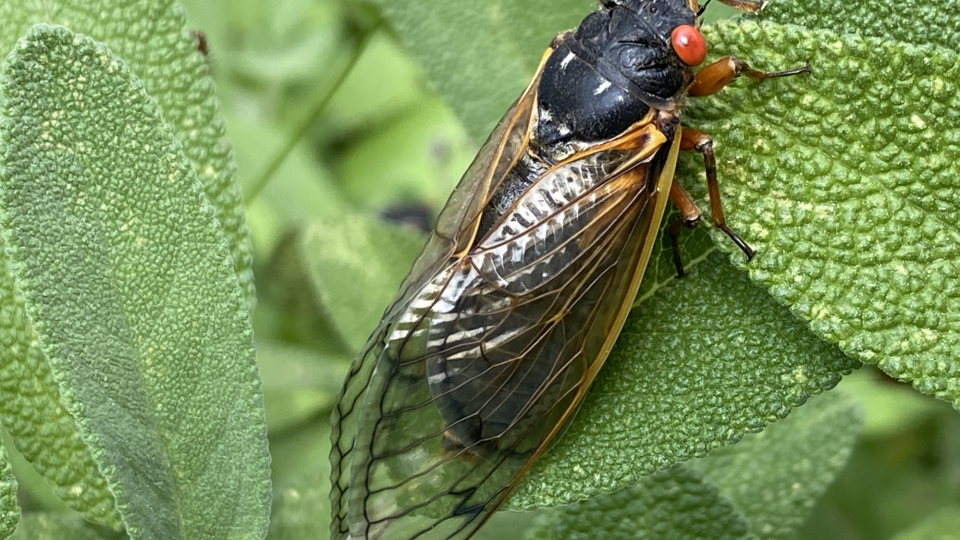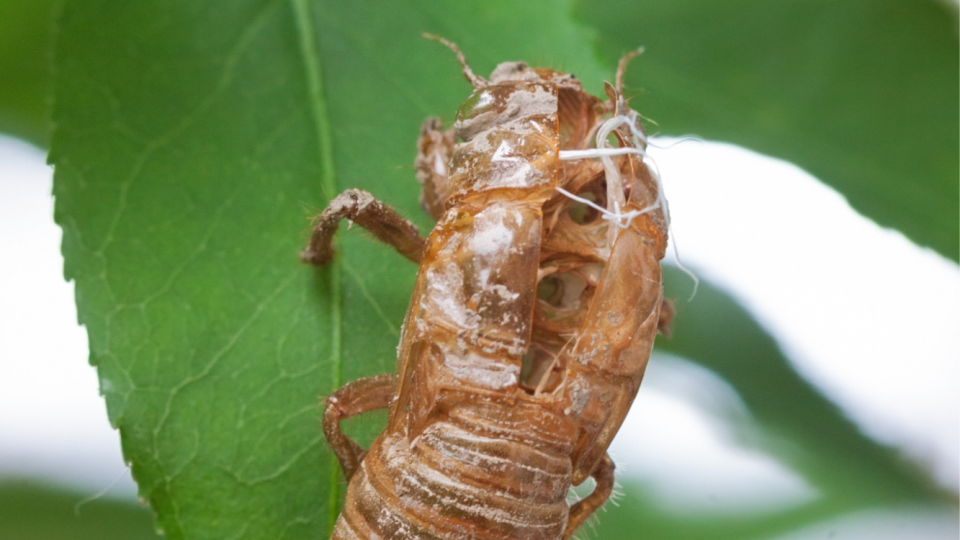‘Cicadageddon’ 2024: What you need to know about the historic emergence
Content is created by CNN Underscored’s team of editors who work independently from the CNN newsroom. When you buy through links on our site, CNN and its syndication partners may earn a commission. Learn more

Many people associate the sound of cicadas with late spring and early summer, and in many areas, cicadas emerge annually around May. The 2024 cicada season, now dubbed “Cicadageddon,” is expected to be much larger, thanks to a double brood of periodical cicadas and the typical annual cicada population.
“Cicadas are not dangerous to people, pets or wildlife such as birds or squirrels,” said Nicole Carpenter, president of Black Pest Prevention in Charlotte, North Carolina. However, with trillions of cicadas expected in certain parts of the country in 2024, you should understand the damage they can do to plants and trees and know how to protect your property.
Why is the 2024 cicada season special?
The 2024 cicada season is unique because some regions of the country will see annual cicadas coincide with a double brood of periodical cicadas.
There are seven species of periodical cicadas, four of which emerge every 13 years and three every 17 years. Once every 221 years, the periodical cicadas all emerge simultaneously. This last occurred in 1803, meaning 2024 cicadas in some areas will include annual species and a double brood that consists of all periodical species.
“This year, the periodical cicadas of the 13-year brood and the 17-year brood emergence will coincide with each other,” said Scot Hodges, vice president of professional development and technical services at Arrow Exterminators. “In areas affected by this, there are already annual cicadas that emerge every spring and summer, [but] this year, the numbers emerging will be much larger than typical years.”
The double brood won’t happen again for another 221 years, in 2245.
When will the cicada broods emerge?
“Typically, cicada broods emerge in late spring or early summer,” said Carpenter. “However, the time of cicada emergence depends on weather conditions. For cicadas to emerge, the soil must be warmed to about 64°F 8 inches beneath the surface.” These ground temperatures are expected toward the end of May.
Where will the cicada double broods be?
The “17-year cicadas typically affect the Northeast and Midwest, and some southern states,” said Carpenter. The “13-year cicadas are common for southern and midwestern states. The areas that can experience “double brood” cicada emergence in 2024 might include parts of the Midwest or the Mid-Atlantic, where both 13-year and 17-year broods overlap.”

According to the United States Department of Agriculture (USDA), the 17-year cicadas (brood XIII) will be concentrated in northern Illinois, southern Wisconsin and eastern Iowa. Parts of Indiana and Michigan will also see cicada activity from this brood.
The 13-year cicadas (brood XIX) will be concentrated in Illinois and Missouri, but the population will also reach northern Arkansas, Iowa, Louisiana, Mississippi, Alabama, Georgia, North Carolina, South Carolina, Tennessee and Kentucky.
“Mathematically, the potential for a mega emergence exists in areas such as Illinois, where it may be possible there is an overlap of the emerging broods,” said Hodges.
General cicada facts
Periodical cicada broods can take some people by surprise because they emerge so infrequently. Understanding what these cicadas look like and what such a large population can mean can help prepare you and potentially keep trees and plants on your property safe from damage.

What does a cicada look like?
Cicadas have short, teardrop-shaped bodies and four clear wings with distinct veining. The top wings extend from the front of the thorax to past the rear of the abdomen. They have two large forelegs and four smaller hindlegs.
Cicada coloration varies by species, but most are a mix of green, black and brown, and some periodical species have orange patterns on their abdomen.
You might also notice the molts from cicadas on trees, the sides of your home or other vertical surfaces. After cicadas emerge from the ground, they shed their exoskeleton and leave them behind to mate. The exoskeleton is light brown and fragile and looks similar to a beetle.
What do cicadas eat?
According to the Environmental Protection Agency (EPA), cicadas in their nymph stage burrow underground and feed on the roots of trees, bushes and shrubs. After they emerge and molt, adult cicadas will consume tree sap.
How long do cicadas live?
The lifecycle of a cicada depends on the species. Annual cicadas live for between 2 and 5 years, although they spend most of that time feeding underground before emerging, after which they live for just a few weeks. Periodical cicadas follow a similar pattern: 13-year cicadas live for around 13 years, and 17-year cicadas live for about 17 years, but just a few weeks are spent as adults above ground.
From the time you start noticing cicadas emerge from the ground, they likely only have four to six weeks to molt and breed before they die.
Do cicadas bite?
No, cicadas don’t bite or sting. They use a long beak, also called a rostrum, to pull sap out of trees, but they won’t bite humans, pets or wildlife.
Are cicadas dangerous to people or pets?
While cicadas can be a nuisance, they are not dangerous to people, pets or wild animals. They don’t sting or bite and are not hazardous if consumed by pets in small quantities.
What should I do if I see a cicada?
You typically don’t need to take any action if you see a cicada. These insects aren’t dangerous to humans or pets, they won’t cause damage to your home and are harmless to most plants, including vegetables and fruits. They only live above ground for a few weeks, so it’s best just to ignore them until they’re gone for the season.
According to the Maryland Department of Agriculture, most established trees will be able to sustain the minimal damage done by adult cicadas during feeding and egg-laying, both of which involve the adult cutting into the bark.
Small, newly planted trees with thin branches could sustain severe damage, so you should consider covering them with tree netting to prevent cicadas from feeding on the sap and laying eggs on the branches. This is especially important where the double brood is expected to appear in 2024.
“Cicadas do not invade homes and are not aggressive towards people or pets,” said Hodges. “Most trees and plants will survive any damage caused by the cicadas, as they use them for egg-laying sites by creating a small cut in a branch or twig. Large numbers of cicadas laying eggs on a single younger tree could be a concern, and placing insect netting on those trees before the emergence will protect those plants if needed.”
Can pesticides prevent cicadas?
Avoid using pesticides to keep cicadas off of your property. The EPA advises that pesticides are ineffective for treating or preventing cicadas. Pesticides do not work because of the large number of cicadas present at once, and they can also harm other animals, plants, pets and children.
Tips for cleaning up cicadas in your yard
Cicadas will perish just a few weeks after they emerge from the ground, and they add nutrients back into the soil as they decay, according to the EPA. You can safely leave dead cicadas in your yard or garden beds to decompose naturally.
However, if you’re concerned about the appearance of your yard or a pet eating the dead insects, you can clean them up using a rake. Dispose of the dead cicadas in the garbage or bury them in a safe area to add nutrients to the ground.
It’s a good idea to clean your gutters after heavy cicada activity, as they can accumulate there and cause clogs.

Bottom line
Cicadas aren’t dangerous to humans, pets, wildlife and most plants. The only danger they pose is to young, woody plants like shrubs and trees. Wrapping these plants carefully with tree netting to prevent access is an easy way to keep them safe. You can also wrap larger trees, but most well-established trees won’t sustain permanent damage from cicadas feeding and laying eggs.
Avoid spraying pesticides or taking other preventative measures. Cicadas appear in such large populations that they aren’t preventable. This is especially true for the double brood expected in 2024. Adult cicadas live for just a few weeks after emerging, so protect young trees on your property and be patient; the cicadas will be gone in about a month.
Note: The prices above reflect the retailers' listed price at the time of publication.
For more CNN news and newsletters create an account at CNN.com

